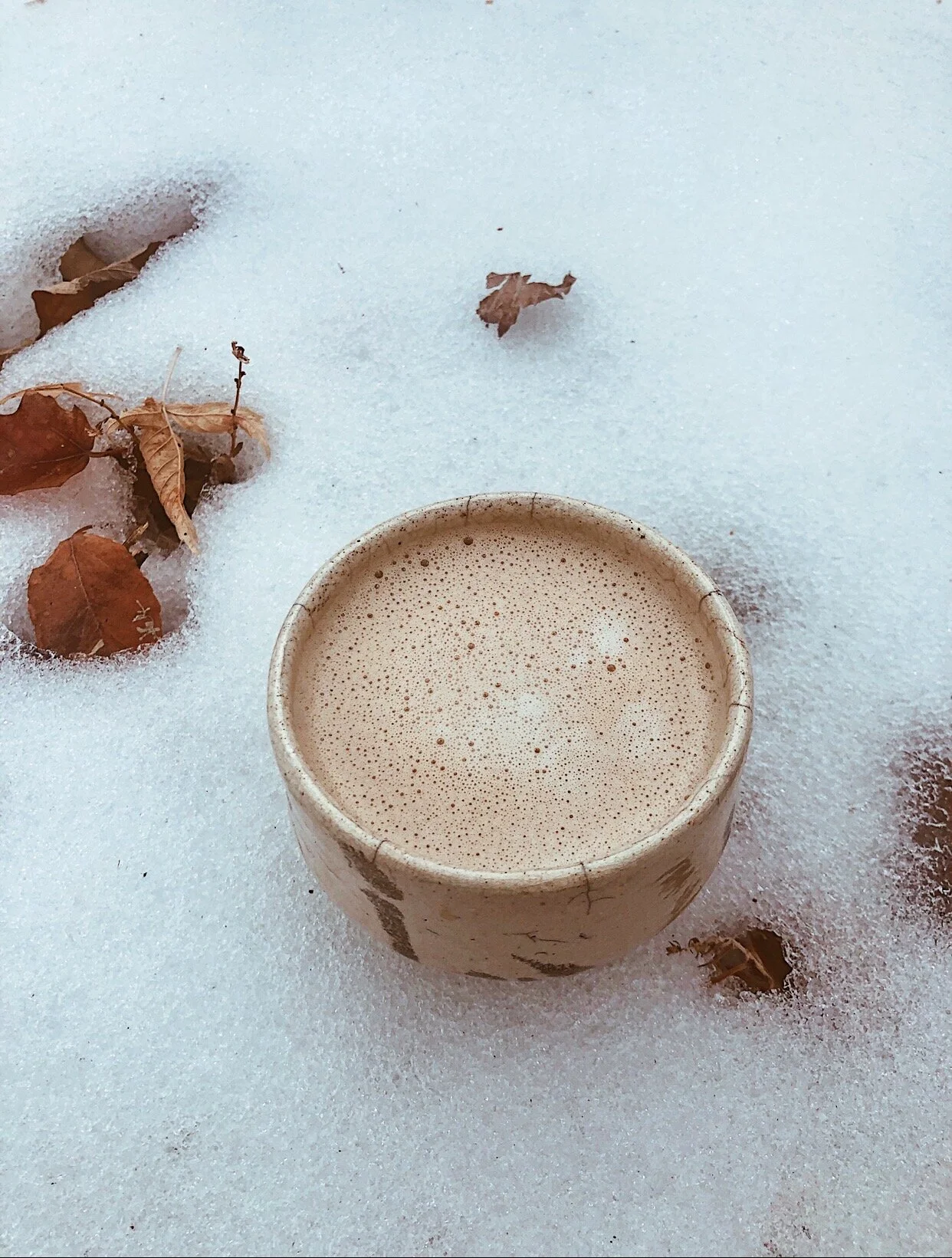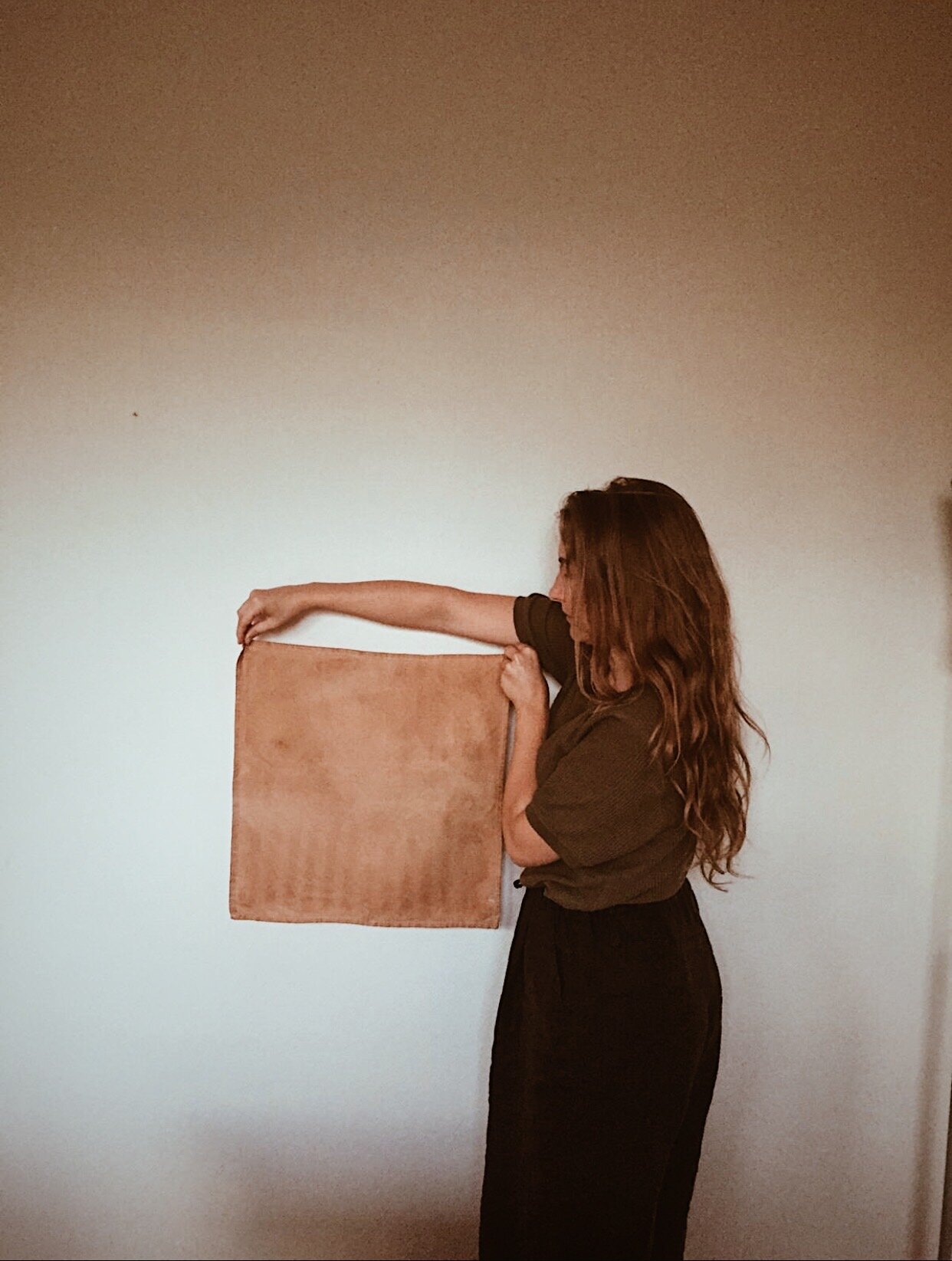
How to explore Chapter 7
In this chapter, we will explore tea as a way of life, beyond the practice. We will explore how we can honor our leaves, after the ritual of tea; different ways to be creative and reuse our leaves after tea, to show gratitude for Nature.
Below, you will find an audio file, written theories, and photos to explore, followed by the video of a ritual of prayers and blessings for Nature.
The Ritual Beyond the Ritual
As you evolve into your tea journey, as you cultivate dedication to your practice, you will start embodying the practice. What you are cultivating within the ritual will be expressing itself within every little details of your everyday flow : the way you move, the way your connect to your environment, in your relationships, the way you are consuming, the way you are cleaning your space, cooking your food, nourishing yourself, your community and this Earth home.
Green & young Sheng Pu’er
Green tea is fresh, usually harvested at the beginning of the cycle, in spring. Traditionally, after being served 3 cups of green tea in Japan, you are invited to eat the leaves. There are so many vibrant minerals and amino acids in green tea, that it would be a waste not to eat the leaves. In Matcha, we essentially eat the leaves since they are served in a powder form, and whisked to you water. In any other tea ritual where you are steeping raw green leaves (non-oxidized and non-roasted), you are invited to honor the leaves by eating them. You can eat them raw, but it is recommended to cook them quickly into a wok, maybe with tamari sauce and sesame oil. You can add anything to it. I love serving them in a salad, or on top of rice. Green tea leaves are also delicious as a cold brew, for the warmer days. Just add the leaves into a glass container with cold water, store the container in the refrigerator for a few hours, and enjoy a cup of cold brew. Japanese green teas are ideal to eat. For young sheng pu’er or most chinese green tea, we recommend to save the leaves for a broth, or to simply return the leaves to Nature.
Oolong & Red tea
For oxidized leaves, like oolong or red tea, you are invited to save the leaves to use them to incorporate to a broth, a soup or a curry. They are delicious and nourishing when boiled into any stew. To reuse your leaves of oolong or red tea after your ritual is a beautiful way to honor them fully. In the colder days, I love making a broth or a comforting chai with recycled leaves of my Bliss Gaba Cha, Ajna Da Hong Pao or Metta Dianhong. In the warmer days, I love making cold brew with recycled leaves of Omotenashi Hojicha.
Hei Cha (aged fermented tea)
For aged fermented leaves, or any hei cha, like shu pu erh or a very aged sheng pu’er, you are invited to use them as a natural way to dye textiles. The cover of the book “Tea, Remembering the Essence of Life” was created from a piece of linen soaked in two bathes of Muladhara Shu Pu’er. The color is really beautiful and earthy. You can do this to recycle clothes and textiles that are stained. Another beautiful idea to recycle leaves of hei cha after the ritual is to boil them for 20-30 minutes, to extract any of the wisdom left, and enjoy as a drink or pour into your garden to nourish the soil. You can also save the leaves and return them to nature, as a meditation, sending prayers and blessings.
White tea and Camellia Sinensis flowers
For delicate White leaves or Camellia Sinensis flowers, you are invited to reuse in a cold brew, to honor anything left that the leaves and flowers have to offer. You are also invited to simply return them to Nature, in the form of a ritual sharing prayers and blessings. White tea and the tea flowers are delicate and gracious, and can serve as an ally to counterbalance the overwhelming presence of fire energy in this world.
Daoist herbs
For daoist herbs, or any herbs addressing the respiratory or immune systems, try to harvest or source your herbs locally, to be gentle on nature and avoid the herbs to travel from far away to you. I recommend getting familiar with the local plant medicine of your region. Explore nature around your home, connect to your environment. If you do explore plant medicine that are not local, try to be gentle in your use, and receive them with immense gratitude.
IDEAS OF RECIPES TO RE-USE YOUR LEAVES AFTER TEA
Shu Pu’er infused fried rice : Boil your pu’er leaves for a few minutes in a sauce pan with water. Strain the water to only keep the infused water, and use it to cook your rice. Finish by stir-frying your rice in a pan with veggies, green onions and eggs as an option.
Sencha leaves on top of rice : Stir-fry your sencha leaves in sesame oil, tamari sauce and sesame seeds, in a pan. Then serve on top of cooked rice. Enjoy your beautiful green sencha leaves just like a vegetable.
Oolong broth : Boil your oolong leaves in a sauce pan with water, add any veggies and spices of your preference, and finish by incorporating the miso paste. Strain the oolong leaves from the broth before serving.
White tea infused rice pudding : Rinse and soak your rice for 30 minutes. Bring water to a boil in a sauce pan and steep your leaves for a few minutes. Strain the leaves and keep only the infused water. Add none-dairy milk, brown sugar, and your rice, and cook on medium heat, until you obtain a beautiful think consistency. Maybe add chopped nuts and/or dried fruits, before serving.
Honoring the Elements of Nature, Beyond the Ritual
May this practice be a way to remember how to live in coexistence with all there is, an ode of love for Nature.
WOOD
Your chaxi, your tea table, your spoon, your coasters or the wood burning to make a fire to boil your water for tea. Try to remember all the trees being cut to create these tools or to serve you for your ritual. Take a moment to meditate on the privilege of being able to sit for tea with the gifts of the element of wood. Take a moment to express gratitude for the trees, the next time you will be walking in the forest. Maybe try to find pieces of wood that could be used to create tools for your tea ritual.
Do you know who made your tea table? You spoon? Your coasters?
Do you know who cuts the wood for you to make a fire?
Do you know who harvested the leaves from the tree?
FIRE
Oh honorable fire, wisdom of creation and regeneration. We are grateful for your presence, allowing us to boil our water for tea, and comforting us during the colder days. We see you. We honor you. We know your strength. We know your spark. You are inviting us to remember the grace of remaining open to the experience, to always serve our tea from our heart. May you allow us to connect with ourselves and with our communities, in this ritual, in this heart-space.
What is your source of fire to boil your water?
Do you take the time to listen to the sound of water warming up for tea?
EARTH
Dear Earth, you are the most magnificent container of all life. We are grateful for your presence, for allowing us to create earth vessels for our ritual. The kettle, the teapot, the serving pot, the cups, the bowls, the wind stove - they are all made of you. Red earth, Brown earth, Yellow earth, Purple earth, Black earth, White earth. Take a moment to express gratitude for the great Mother, for letting us extract pieces of her body to create vessels for our ritual, to be nourished. Take a moment to express gratitude for the hands that created these vessels.
Are you vessels hand-made? Do you know the artist who made your vessels? Do you know their process, their story, the story of the land from which the earth came from? Have you ever considered exploring the art of pottery making? How does it feel to put your hands into the earth to create the vessels that will be nourishing you and your community?
METAL
The sacredness of returning to the unknown, emptying the mind, cultivating presence in the space within the thoughts. The wisdom of metal can be felt through the space within your vessel, awaiting to receive the new experience of tea, or the space within your lungs awaiting to breathe into the mystery, Your waste water container can be made of metal, to honor what is no longer serving, what you are letting go of, what is being released from the cycle. Your tea stone can be a way to honor the formlessness, the mystery, through the form of a crystal that you are incorporating into your chaxi. The next time that you are exploring nature, maybe look for a stone, a piece of mineral, that you feel called to - so every piece of your ritual is carrying a meaningful story.
Did you allow yourself to breathe before entering your ritual? Are you allowing yourself to let go, to release what no longer is serving you?
WATER
Oh precious water, we feel very privileged to have access to clean water, to make tea. What a blessing it is to find contentment in you when we are thirsty, to receive your purification when you are liberating us from the dust of the past, to witness the beauty of your grace when you are yielding to the way. In your rivers, your streams, there is a force remembering the way home, to the sea of Oneness.
Thank you water, we honor you, we know how blessed we are to know you.
How do you source your water for tea?
Have you ever tried melting fresh snow for tea or collecting water from a local spring?
-
In the dance of water and leaves, there is a path to remember the essence of life.
TEA COURSE PACKAGE
If you are supporting your practice with the tea course package, for this chapter, we explore Kai Yin Zhen, a beautiful tea made from precious hand harvested plump buds, of old trees of Jinggu, Yunnan, China.
Kai Yin Zhen carries the spirit of the Zhi, the wisdom of Water, like the river, endlessly returning to the great sea of oneness.
The Way of Tea Course
CONTENT
Chapter 1
The story of Tea
Chapter 2
Theory of Chapter 2
Chapter 3
Theory of Chapter 3
Chapter 4
Gong Fu Cha Theory
Chapter 5
Theory of Japanese Tea History
Chapter 6
Creating your Tea Offering







